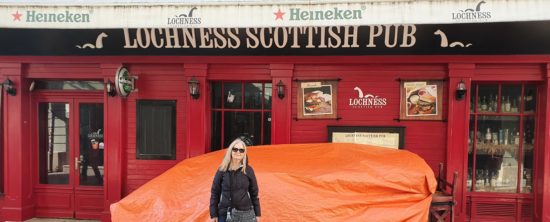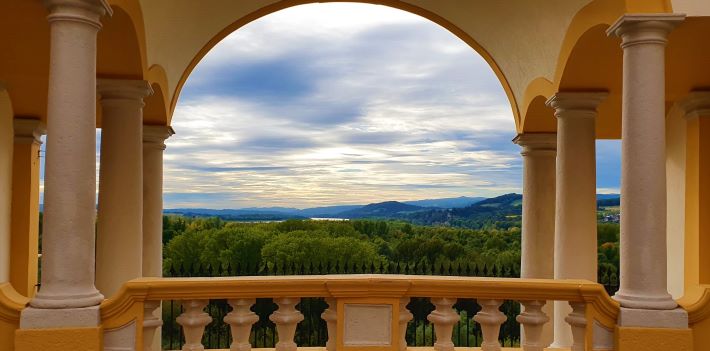The view above is of the Danube Valley as seen from the exquisite Benedictine abbey at Melk, Austria. The abbey’s roots go back to the eleventh century.
I visited the abbey as part of my tour of the autumn-coloured villages of Europe. It was a dual mission – part novel research (for my next novel, years in the making, and due out in late 2025), and part holiday. I was on the trail of medieval monks, amongst other things, and came across some wonderful sites, and many interesting stories.
I started my journey in Dubrovnik and Split, Croatia. These centres sit on the famous Dalmation Coast and have the finest vista of the exquisite Adriatic Sea, where you need sunglasses to watch the intense sunsets:

Both Split and Dubrovnik are famous as sites in the HBO Game of Thrones series. When you look at Dubrovnik’s medieval archaeology and the Adriatic Sea setting, you can see why:


Call me corny, but I even managed to channel GOT heroine, Sansa Stark of Westeros:

Protected by its thick stone walls, Dubrovnik was once a prosperous free maritime state desired by many, including the Romans, French, Austrians, and Germans. Sadly, the poet Milan Milišić (translator of The Hobbit amongst other things) was one of the inhabitants killed in the seven month siege by the Yugoslav National Army during the 1990s:

As every tourist knows, Europe presents a stunning array of medieval cathedrals. But few are as old as the gilt-embellished Saint Dominus in Split, below. It was consecrated in the seventh century when converted from an existing mausoleum built by the Roman general, Diocletian, in 300AD.

Diocletian the strategically smart warrior who became a Caesar, was born into a humble family in Croatia. These are a couple of his fearsome cosplay centurions: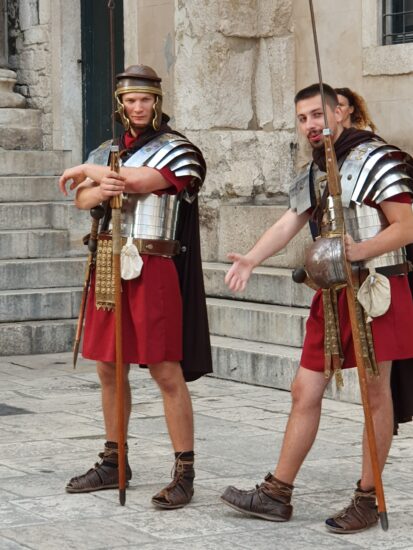
Further north-east is Budapest, the birthplace of the Nobel Prize winning writer, Imre Kertész. St Matthias Church (earlier known as the Coronation Church of Buda) is located in the Buda area of Budapest, and they say it was founded in the 11th century. Throughout history, it has been the coronation venue of several Hungarian monarchs, including its namesake, King Matthias Corvinus (the Raven King), a 15th century king of Hungary and Croatia. He was an intellectual, but as is common in history, his reign was not without conquest and bloodshed. In its distant past the building has been a place of prayer alternatively for Muslims and Christians. I wonder what stories its pillars could tell:

Above the vineyards of the Wachau Valley, Austria, stands the blue tower of the Abbey Church at the Augustinian Convent in Dürnstein. The view below is from the castle ruins behind it, where in 1192, Richard the Lionheart was imprisoned by Leopold V of Austria. Richard had been returning to England from his third crusade when he was captured. While in prison, Richard is said to have written the musical piece, Ja nus hons pris – “No man who is imprisoned”.

Vienna, Austria, is the birthplace of many prominent musicians and writers and was at various times the musical centre for Strauss, Mozart, Haydn, Beethoven, Schubert, Brahms and Mahler. Its Gothic cathedral of St Stephen has a steeple that is 450 feet high:

However, you realise what a tiny speck you are when you enter the immense and poignant thirteenth century Dom at Cologne, Germany – the only building not annihilated in that area during the Second World War. Legend has it that it was deliberately left standing by the allied forces’ pilots as a marker for their bombing raids:
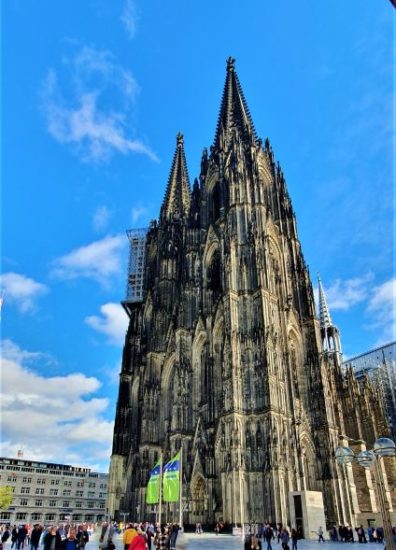
In the exquisitely beautiful villages of Austria and Germany, there is a real danger of suffering an overload of medieval town charm:



There are some glad tales in these towns of near-misses during the Second World War; of villages which were saved from British and American bombs by fog, or in the case of Rothenburg ob der Tauber, Bavaria, by the timely negotiation of the Allies with the German army. It was partially bombed but legend has it that the Allies’ commander negotiated a peaceful take-over rather than destroy the beauty and history of this important town. Relief, not only for the inhabitants, but for the millions of tourists now visiting.
As history tells us, Europe’s internal cross-border and cross-cultural attacks stretch back beyond our 21st century. In 1631, Rothenburg was a Protestant town when it was besieged by the Catholic Imperial Army. The story goes that the town attempted to placate the invaders by presenting them with an exquisite glass container of wine the size of a small barrel. The invading Count, in order to torment his captives before putting them to death, challenged one to drink the barrel’s worth of wine in one go. The Mayor stepped forward and succeeded in this seemingly impossible feat. Impressed, the Count spared the city from burning. The local clock tower celebrates this event:
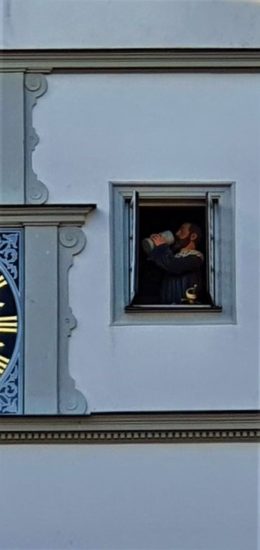
Grote Kerk was established in the fourteenth century in Haarlem, Netherlands. Mozart, at the age of 10, played the organ there in 1766. He must have looked tiny amongst those pipes. In 1851, the writer Herman Melville compared the thousands of organ pipes to the bones in the whale’s mouth in his novel, Moby Dick. We’re looking through Moby’s jaws, below:

And so ends my mini travelblog. But before I go, I have to mention an expected find in Bratislava, Slovakia. It was a case of cultural dislocation, or suspiciously, an escape. See below. Perhaps that’s where you’ll really find the monster – hidden under an orange tarpaulin in Bratislava. Maybe the whisky is better there.
